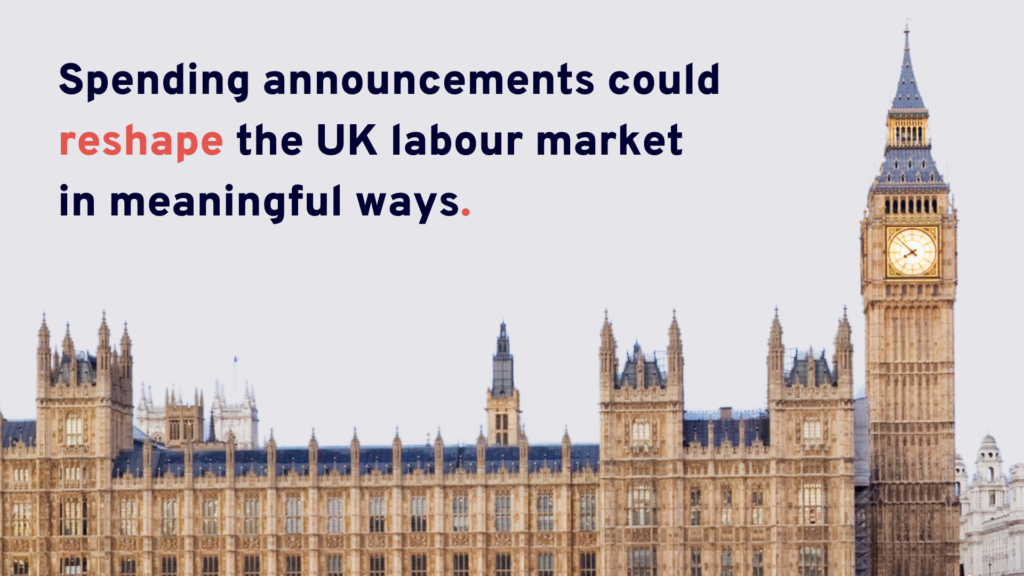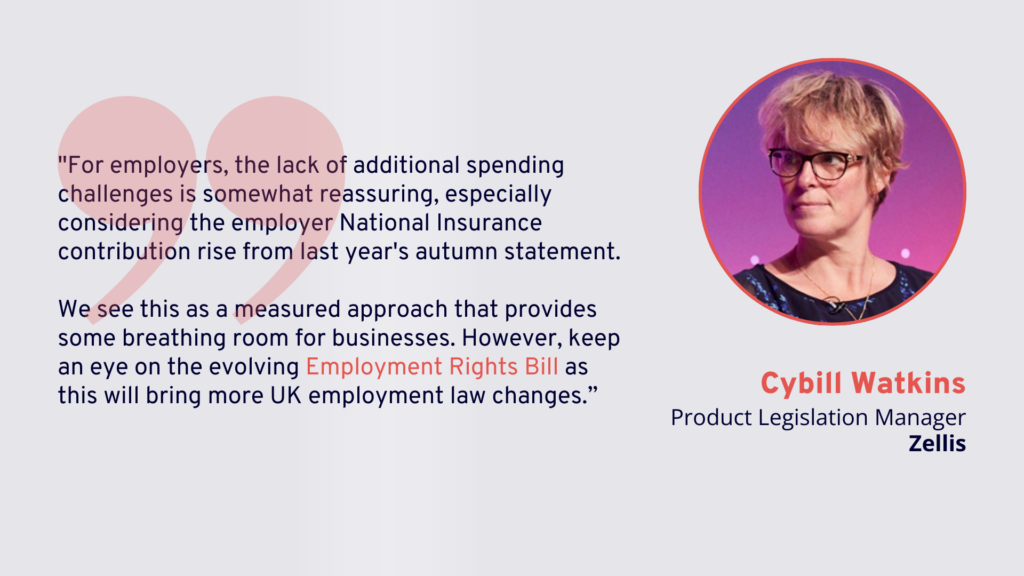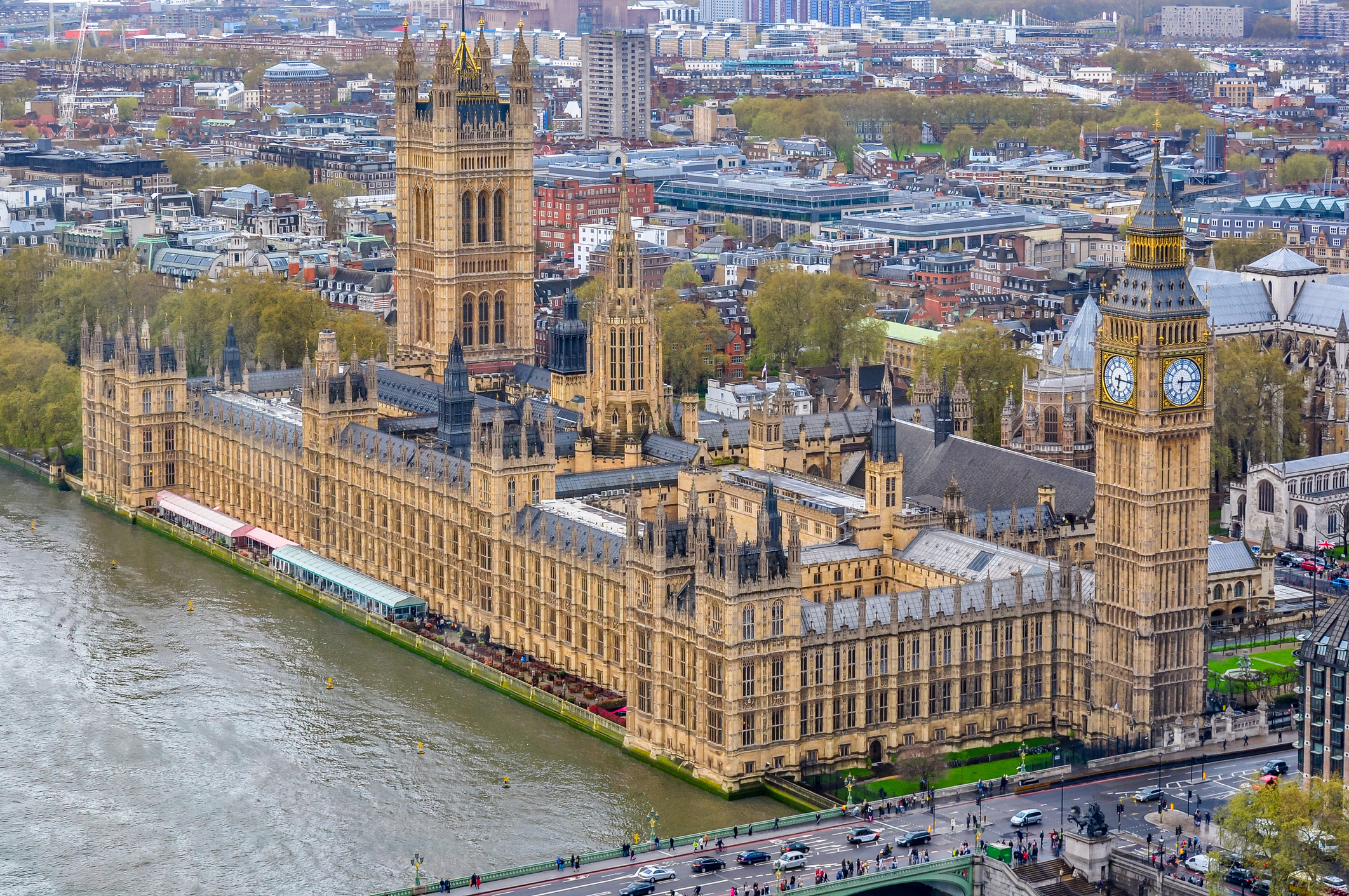The Spring Statement 2025 covered additional government spending as well as planned efficiency cuts to public services. Against a backdrop of lower inflation, Chancellor Rachel Reeves set out plans on ‘restoring stability to the economy’.
In this blog
Key spending commitments and workforce implications
Spending cuts and what they might mean
Our take on Spring Statement 2025
Economic landscape update
The latest economic indicators paint an interesting picture. The Office for National Statistics (ONS) reports inflation has fallen to 2.8%, with forecasts suggesting a further decline to 2.1% in 2026. However, the Office for Budget Responsibility (OBR) has tempered growth expectations, downgrading the forecast from 2% to 1%. Providing some light at the end of that tunnel, it expects higher growth in the following years leading up to 2029.
Key spending commitments and workforce implications

Several critical spending areas discussed have some potential implications for the UK payroll and employment environment:
- £1 billion allocated to support workforce re-engagement
- £400 million invested in the Department for Work and Pensions
- Increased National Minimum Wage benefiting approximately three million workers
- Defence spending set to rise to 2.5% of GDP by 2027
- £2 billion in grant funding for additional house building
- Universal Credit payments will incrementally increase, rising to £92 per week in 2025-2026 and projected to reach £106 by 2029-2030.
These spending announcements could reshape the UK labour market in meaningful ways. The £1 billion workforce re-engagement fund signals potential new job training and placement programmes, while the Department for Work and Pensions investment suggests more targeted employment support.
HR teams should anticipate increased opportunities for skills development, particularly in sectors like defence, construction, and public services. The National Minimum Wage increase, while raising the payroll bill for some employers, could improve workforce retention and employee satisfaction across multiple industries.
Spending cuts and what they might mean

A number of spending reductions cuts were announced, which will impact the UK employment landscape:
- Welfare system reductions affecting working benefits
- Personal Independent Payment (PIP) modifications
- 10,000 estimated public service jobs may be cut
These spending cuts could create significant challenges for UK payroll and employment strategies. The welfare system reductions, particularly those impacting working benefits, could place additional financial pressure on employees in vulnerable sectors. The potential elimination of approximately 10,000 public service roles suggests a period of potential restructuring and job market uncertainty.
HR teams will need to carefully navigate these changes, potentially supporting affected employees through transition programmes, reviewing financial wellbeing support, and maintaining workforce morale during a period of potential instability.
Our take on Spring Statement 2025

Commenting on the announcements, Cybill Watkins, Product Legislation Manager, said:
“This statement presented a more nuanced economic landscape than we initially anticipated. The spending commitments, particularly in job creation sectors like housebuilding, demonstrate a strategic approach to economic recovery.
“For employers, the lack of additional spending challenges is somewhat reassuring, especially considering the employer National Insurance contribution rise from last year’s autumn statement. We see this as a measured approach that provides some breathing room for businesses. However, keep an eye on the evolving Employment Rights Bill as this will bring more UK employment law changes.
“Increased defence spending may bring greater work opportunities in this sector, while the welfare reforms could see more people re-entering the workforce. Overall, we believe this statement signals a cautious but forward-looking economic strategy. The full impact of the measures naturally remains to be seen.”
Conclusion: Chart a careful path forward
The Spring Statement 2025 reflects presented an economic landscape that demands agility from HR and payroll professionals. The delicate balance between spending commitments and cuts signals potential challenges and opportunities for UK employers. These will require careful navigation.
HR and payroll leaders should view this as a critical moment to reassess workforce strategies, remain flexible, and prepare for potential further developments in the upcoming King’s Speech and Autumn Budget.
Key takeaways
- The National Minimum Wage increase will impact approximately three million workers, potentially improving workforce retention and employee satisfaction.
- Defence sector spending will rise to 2.5% of GDP by 2027, creating new job opportunities and potential workforce expansion in related industries.
- Public service reforms and welfare system changes may trigger significant workforce restructuring, with an estimated 10,000 potential job cuts.
- HR teams should prepare for increased skills development opportunities, particularly in defence, public services, and workforce re-engagement programmes.
Are you ready for new employment rules?
Get the latest on the Employment Rights Bill, the new law that impacts sick pay, leave, flexible working, contracts, and more.









